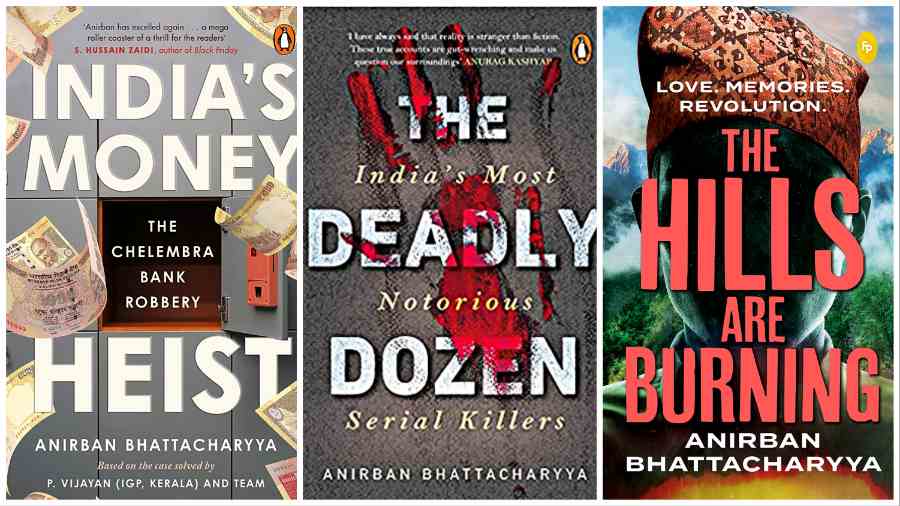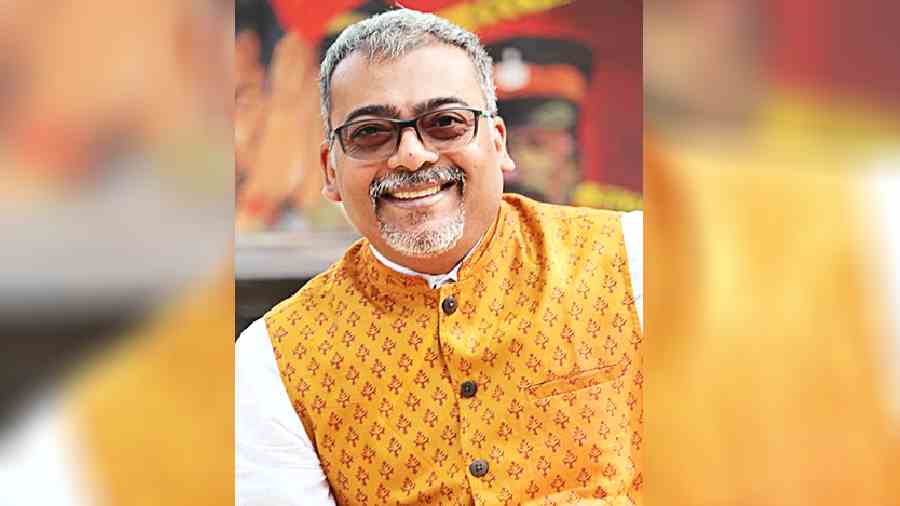Anirban Bhattacharyya, the king of true crime dramas like Savdhan India — F.I.R, Crime Patrol and Fear Files that have ruled prime time, entered the literary scene with books like India’s Money Heist: The Chelembra Bank Robbery and The Deadly Dozen: India’s Most Notorious Serial Killers. He has also written a children’s book called The Adventurous 6: The Sinister Summer Holiday. His latest book, The Hills Are Burning, a semi-memoir, is an essential story for him, a story that he has been mulling over eight years and a story that was necessary to be told. The book captures the Gorkhaland agitation that affected the lives of the people in the late ’80s and Bhattacharyya, who studied at Dr Graham’s House, a boarding school in Kalimpong, and grew up during the most volatile period in the hills, adds true accounts of his friends bringing out the real story to the fore before they become hearsay. Excerpts.
Your last two books — India’s Money Heist: The Chelembra Bank Robbery and The Deadly Dozen: India’s Most Notorious Serial Killers — did quite well and The Hills Are Burning brings another true account of the Gorkhaland agitation. Tell us about the genesis of the book and how important was it for you to tell the story.
I have been a television producer and content guy since 1998. I have created and produced the crime drama series Savdhan India — F.I.R. and wrote over 1,000 episodes. Post that, I have been writing true crime bestsellers as well. The Hills Are Burning is a very personal book which I have been writing over the past eight to 10 years. Also, because it is a semi-memoir and is very personal, I had to make up my mind about whether I wanted to reveal such details or not. At the face of it, it’s an innocent, bitter-sweet story of three friends growing up in a boarding school in Kalimpong and you think everything is fine till, of course, the genesis and the subsequent violence of the Gorkhaland agitation happens in 1986, which the children then come face-to-face with and they are forced to grow up with. And from the innocent and cocooned lives they were living in the boarding school suddenly they are confronted with the mindless violence and of course the human rights violations that destroyed Kalimpong and her people. So it is a true story of sorts and I wanted to tell the story.
This book is a tribute to my classmates and friends I grew up with in boarding school in Kalimpong. And most importantly, a lot of the stories or incidents written in this book have been buried, erased, and denied by the government at that point in time, which I wanted to share with future generations. So, before the stories become an urban legend or go into folklore I decided to write them and immortalise them so that future generations would know the sacrifices people made and what truly happened. It is not a political book which is written to stoke the fire of the agitation, not at all, it is a very emotional story of a town and its people.

You have been mulling over the book for eight long years. What convinced you to finally bring it into the public domain?
I think while researching for the book and talking to the people who witnessed all of these incidents, who were in their 20s at that time. I heard heartbreaking stories of people who suffered. A friend of mine who was 12 or 15 saw her father being shot down in front of her eyes. He was innocent. And when the mother took the case to court, it was proven that the CRPF wasn’t there that day. So, how do you fight the system? And till this day she is traumatised by that incident. I wanted to bring out the human aspect of the tragedy. I also wanted to honour the lives of these people. My book is about innocent people caught in the crossfire. The story is about love, memories and revolution.
Given that the book has personal accounts as well, how challenging was it and was it cathartic?
It was a cathartic experience for me; I wanted to get it all out before it was too late. For me, it was an emotional journey revisiting some moments. It was also cathartic for my friends. I was making them dig into dark and painful memories they had chosen to forget. I forced them to remember them again. Also, for the people of Kalimpong that I spoke with. It was cathartic for all. And yes, it was challenging because I didn’t want to bullshit. I was nervous about writing the book and wanted it to be a true narrative. This is not some imaginative story. It’s a thoroughly researched book and a non-fiction book told in a fictional narrative manner. I thank my publisher Fingerprint for believing in me and my literary agent, Book Bakers, who have been with me since 2018.
How closely have you been following the Gorkhaland agitation?
I wasn’t. When something goes on for too long it becomes a blank spot. I don’t live in Kalimpong any more, all of us are trying to lead our lives in different parts of the world. I had to update myself on a lot of events that happened following that era. It was an updated lesson for me. The tragedies of Gorkhaland keep coming up cyclically. Politically I am not making a comment on what is right or wrong… but I want to say that in any conflict it’s always the people who suffer. It’s the people of the hills who have suffered.
When was the last time you went to Kalimpong?
I visit my school every second year. My umbilical cord is not cut and it will never be cut. My school is very special to me and I am in touch with all my classmates.
You already have mastery in creating non-fiction content for the screen. Do you want The Hills Are Burning to be adapted into a film or series?
Of course! Currently, very popular stars are reading the book, one in Mumbai and the other in Calcutta. Let’s see what happens.
When are you coming with the book to Calcutta, your hometown?
I have not decided on the dates yet but yes we will have a book launch here. And of course, a launch or an event in Kalimpong as well.
